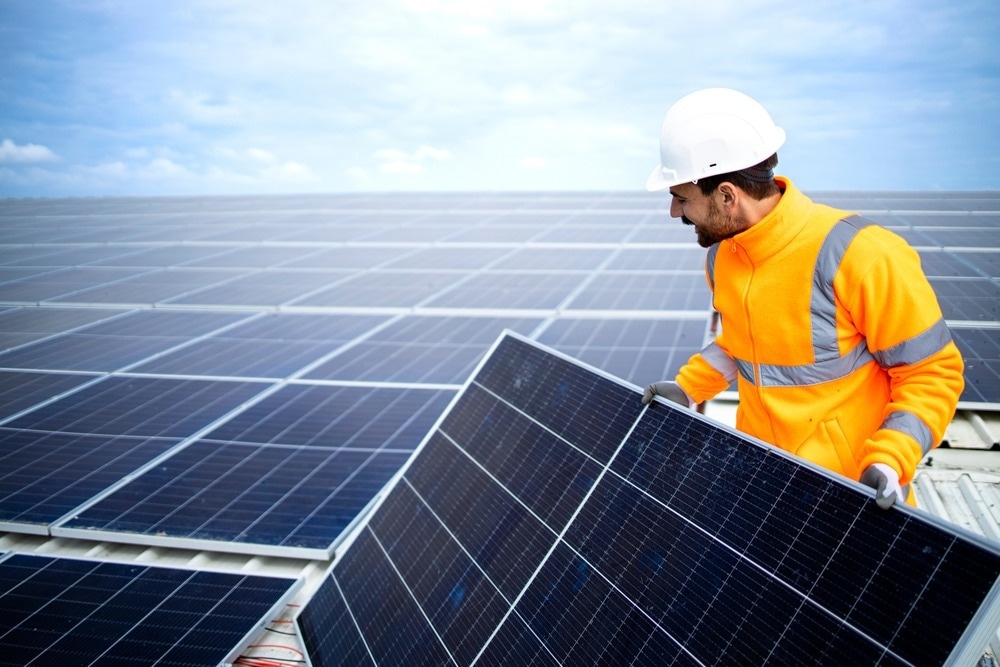The chemically and thermally stable inorganic cesium lead triiodide (CsPbI3) perovskite exhibits significant promise in photovoltaic applications. The utilization of DMAPbI3 (dimethylammonium [DMA]) or the “HPbI3”-assisted crystallization has proven to be successful in producing high-quality β- or γ-phase CsPbI3 films.

Image Credit: Aleksandar Malivuk/Shutterstock.com
However, this method leaves behind DMAPbI3 residue and leads to a decline in both the photovoltaic performance and stability of the resulting material.
Professor Jinsong Hu and his research team at the Institute of Chemistry of the Chinese Academy of Sciences (ICCAS) introduced a novel and universal approach for the extraction of DMA, which relies on hydrogen bonding. This innovative method has been employed to create highly efficient and durable inorganic CsPbI3 solar cells. The study was published in the journal Joule.
The research team incorporated polyacrylic acid (PAA) into the inorganic CsPbI3 precursor materials, composed of CsI, PbI2, and DMAI. Throughout the formation of CsPbI3, PAA played a crucial role by forming hydrogen bonds with DMA, thereby expediting the decomposition of DMAPbI3 and facilitating the extraction of DMA.
The sample treated with PAA demonstrated a more rapid phase transformation and successfully produced a high-quality CsPbI3 film, free from any residual DMA. Detailed experimental and theoretical investigations unveiled that the hydrogen bonding effectively assisted in the extraction of DMA by lowering the energy barrier required for its escape.
This approach can also be extended to other additives capable of forming hydrogen bonds with DMA, such as polyacrylonitrile (PAN) or poly(4-vinylpyridine) (PVP).
When combined with a stable poly(3-hexylthiophene) (P3HT) hole transport layer, the CsPbI3 perovskite solar cells (PSCs) treated with PAA achieved an exceptional power conversion efficiency (PCE) of 20.25%.
This marks the highest reported efficiency for CsPbI3 PSCs with a dopant-free P3HT hole transport layer (HTL). Notably, these devices exhibited outstanding moisture and operational stability, retaining 94% of their initial PCE after aging under low relative humidity conditions (<15%) for 10,224 hours and over 93% PCE after continuous illumination for 570 hours.
This innovative strategy has facilitated the environmentally friendly crystallization of CsPbI3, greatly expanding the range of humidity (up to 80% relative humidity) and temperature conditions for fabrication. As a result, it has created new possibilities for the development of all-inorganic perovskite solar cell (PSC) modules.
Journal Reference
Li, M.-H., et al. (2023). Hydrogen-bonding-facilitated dimethylammonium extraction for stable and efficient CsPbI3 solar cells with environmentally benign processing. Joule. doi.org/10.1016/j.joule.2023.09.009.